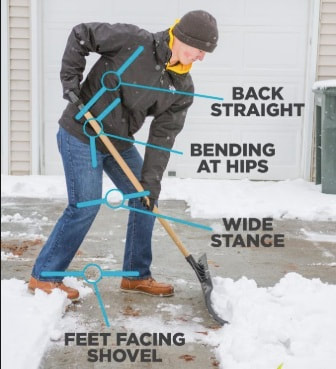As physiotherapists however, we are already looking into the next season, winter. We find ourselves doing this because we know that winter means snow, snow means shoveling, and shoveling means low back injuries.
One of the most challenging aspects of living in Saskatchewan is that our snowfall is quite unpredictable in that we may go without a snowfall for over a month and then suddenly have a record dump of snow that requires a full day of heaving the white fluff.
It’s also important to recognize that the heaviness of the snow changes too, as even an inch of “wet” snow will increase it’s weight 4-fold. Because of this, we may ask our low back muscles to go from zero to sixty way too quick, and the usual response that lower backs will give is” I hope you’re ready to take me to the physiotherapist tomorrow”.
Lucky for us Saskatchewanians, it doesn’t have to be this way! We can adequately prepare our bodies to be able to endure this inevitable task, but it needs to start now. I emphasize this because it is unreasonable to expect our muscles to perform such a grueling task with only a couple weeks of exercising, although, if you are late in reading this, a few weeks is better than nothing. Utilizing the progressive overload principle, we need to increase the load gradually and continually, but this requires adequate rest and recovery, and that takes time.
Exercise Can Help!
As the movement of shoveling snow involves pushing, lifting and stabilizing, we need to focus on having a solid base of support, which we can develop through strengthening our legs and core. Try a few of these exercises to start out with and then you can gradually progress them either through increasing the load, time, frequency, or repetitions. It is important to do so carefully, so working with a physiotherapist is a good place to start to ensure you are ready to progress.
- Using proper technique and
- having a plan
- keeping a straight back while bending at the hips,
- having a wide base of support and
- having our feet face in the direction we are going or lifting the snow.
To get the snow up the embankment and off the shovel, should involve much of the lift coming from the legs and dumping the snow off the shovel instead of twisting or throwing it off.
The other way to reduce injuries is through proper planning for the job.
A big mistake we make that can really fatigue our backs is to try and tackle the whole job in one attempt. A helpful strategy will be to break up shoveling into portions of 10-15 minutes and then taking a break to let the body recover.
This means setting aside adequate time that accounts for breaks in between “sets” of shoveling.
We can also prepare by knowing the weather forecast, and shoveling periodically through the day to not allow all the snow to build up.
~ Kyle Siemens, Physiotherapist











 RSS Feed
RSS Feed